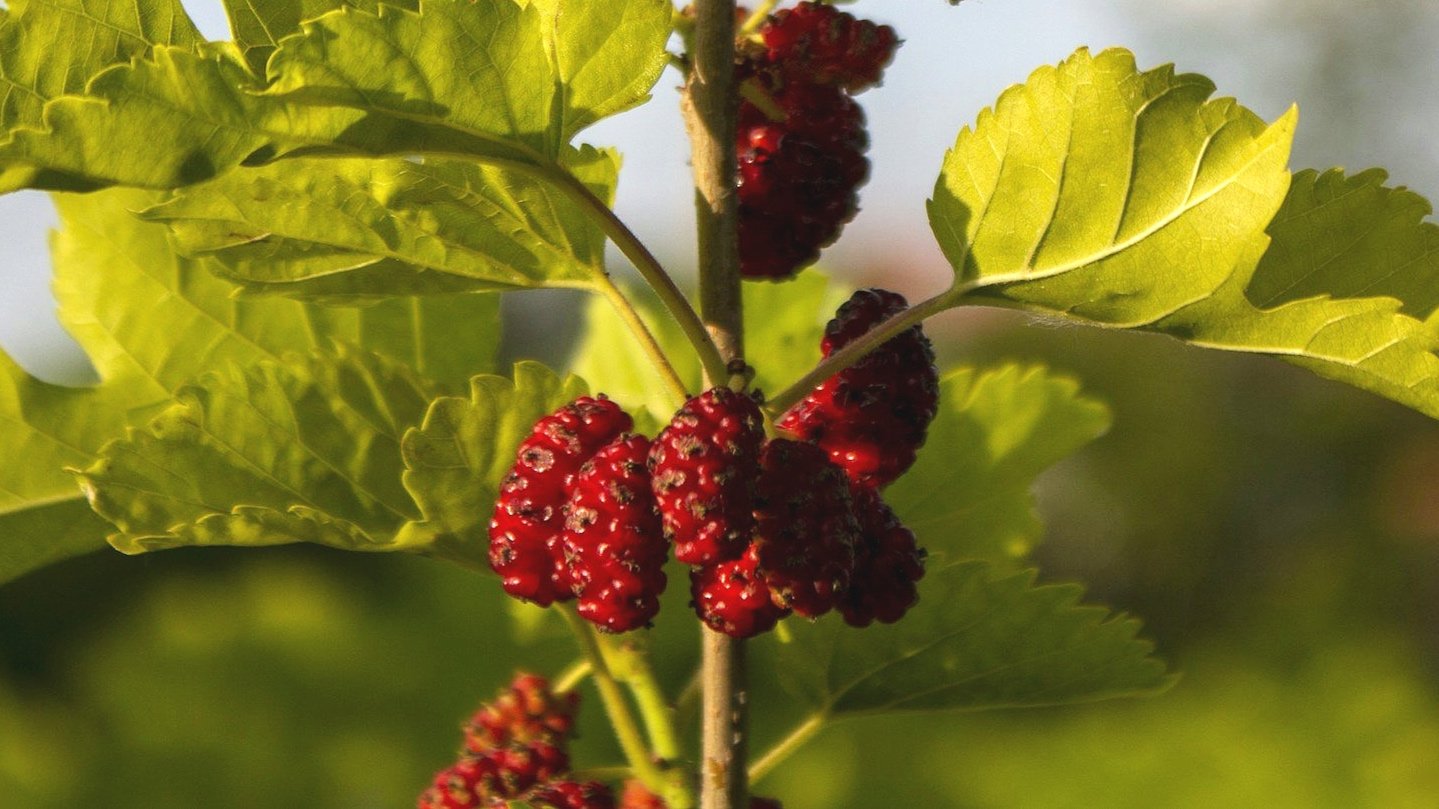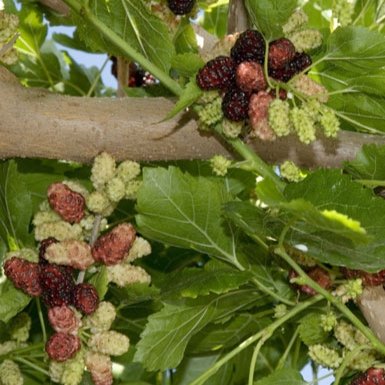
Our Mulberry Selections
If you plan to grow fruit trees in the Bay Area, you must consider site factors like sunlight, soil conditions, and your watering practices. Choosing the right variety, providing adequate sunlight, and proper pruning are all important for success and will reduce the potential for pest and disease problems.
-
Fruiting:
Mulberries can be grown for both ornamental purposes and fruit production. The listed varieties have been selected for their fruit producing capabilities. When placing in the garden, be aware that this fruit will stain anything they fall on. Avoid planting them where they may grow over a patio, walkway, or driveway.Size:
Many varieties grow extremely large, choose carefully as mature trees will overwhelm most yards. Dwarf or smaller growing varieties are available.Chill hours:
Typically not considered as they have no or extremely low chill hour requirements.Cross pollination:
All will produce abundant crops without cross pollination.Air Flow - Air movement, even the slightest breeze, is key to dry the leaves from the morning dew. Without it your fig will be prone to leaf fungal problems.
-
In the Bay Area, the best growing conditions for Mulberries involve full sun, well drained soils, and good airflow.
Specific Growing Conditions:
Sunlight:
Mulberry trees need a minimum of six to eight hours of direct sunlight per day to fruit well.Soil:
Well-drained, sandy loam soil high in organic matter is preferred however, they are very adaptable to most soil types.Irrigation:
Established Mulberries require some to little irrigation during dry periods of our year. Typically, a well-established tree may only need a slow deep watering every 14-21 days in the East Bay, best 14 days inland. A newly planted tree will need lighter more frequent watering.Mulch:
Mulching helps regulate soil temperature, retain moisture, and suppress weeds.Fertilization:
Supplemental fertilization is typically not needed unless the plant shows signs of deficiency. Use a well balance fruit tree fertilizer as needed.Pruning:
Pruning Mulberries is done more out of a need to control the size of the plant over the need for fruit production. Prune in winter, avoid summer pruning.
-
Mulberry’s are typically free of any major pest or disease issues.
Birds:
Birds are attracted to the ripe fruit and will devour large quantities. Their droppings will stain whatever they fall on.Control:
If growing a smaller variety, net the tree to prevent the birds from accessing the fruit.
~ THIS LIST MAY NOT ACCURATELY REPRESENT OUR CURRENT STOCK ~
Thank you Dave Wilson Nursery for the use of your images and descriptions.





The large-sized, fruit are similar to Persian. Grows at a moderate rate. Drought tolerant once established. Grows larger and more rapidly with irrigation.